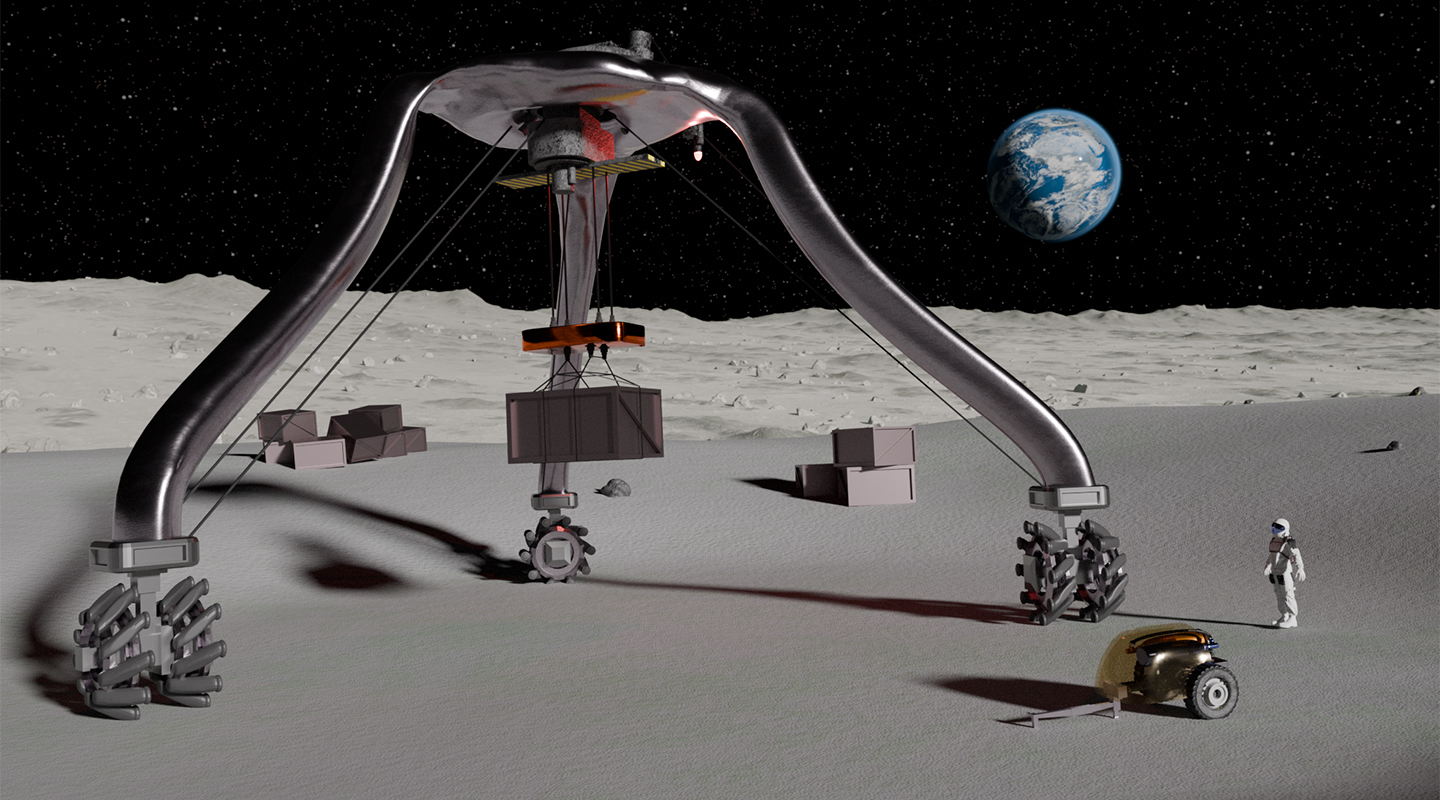Once Again, Student Team Selected for NASA BIG Idea Challenge
Student group to explore expandable technology for lunar structures

If or when NASA re-establishes a human presence on the moon, novel inflatable systems configured for future lunar operations could play a key role.
A team with Northwestern Engineering students was again selected to help fill that need.
The interdisciplinary group including 23 McCormick School of Engineering students was one of six selected for funding in NASA’s 2024 annual Breakthrough, Innovative, and Game-Changing (BIG) Idea Challenge. The Northwestern proposal “METALS: Metallic Expandable Technology for Artemis Lunar Structures” received $146,420.85 in funding and is led by team leads Trevor Abbott (mechanical engineering), Julian Rocher (mechanical engineering), and Ben Taalman (materials science and engineering).
This year’s theme — “Inflatable Systems for Lunar Operations” — required teams of undergraduates, graduate students, and their faculty advisers to go beyond inflatable habitats, and instead explore innovative concepts incorporating inflatable components such as deployable towers, soft robotics, low mass cranes and gantries, large antennas and solar reflectors, and emergency shelters.

Advised by Ian McCue, Morris E. Fine Junior Professor in Materials and Manufacturing, and Ryan Truby, June and Donald Brewer Junior Professor, this year’s group proposed a metal inflatable system made by laser-welding stacked layers of sheet metal along their aligned edges. Once on the lunar surface, pressurization would deploy gantries, solar towers, and other structures from rolled, folded, or origami-like stowed configurations.
“This team is incredibly talented, not only because of the skills we currently have, but due to the skills we are willing to learn. While there is no clear path for developing a system like METALS, team members all go above and beyond to think creatively and tackle problems in new ways,” Abbott said. “A key to our team is confidence. Regardless of the challenges we face, we know that we have the mental and physical tools to put METALS on the Moon someday, and that our team will come together to engineer the future of space.”
This concept would help a sustained human lunar presence build the required infrastructure to survive by safely packing equipment that would need to be stored within the volume constraints of lunar landers and deployed to far larger form factors on the lunar surface. The metal-based inflatables could be plastically deformed from their stowed configuration to deploy large-scale inflatables, maintaining form and function even when internal pressurization is lost. This system utilizes the superior resistance of metal against lunar dust abrasion, micrometeorites, radiation degradation, gas permeability, and temperature extremes to provide significant advancements in reliability and longevity compared to traditional polymer-based inflatable concepts.
The team is scheduled to present its work in November at the 2024 BIG Idea Challenge Forum.
Along with Abbott, Rocher, and Taalman, the team included students from the following Northwestern Enginering departments:
Chemical and Biological Engineering: Luke Fahrney
Computer Science: Oscar Depp (BS/MS, also studying engineering sciences and applied mathematics), Mingyuan Wang (Weinberg College of Arts and Sciences)
Electrical and Computer Engineering: Devan Chanda, Bobby Cloninger, Omar Kamil, Enrique Montemayor
Industrial Engineering and Management Sciences: Luis Diaz
Materials Science and Engineering: Tareq Mufarech, Liam Warlick
Mechanical Engineering: Xitlalli Castaneda, Gavin Chung, Serena Frolli, Charlize Guillen, Spencer Guy, Victoria Israel (also biomedical engineering), Joshua Natelson, Rahat Patel, Justin Chang Stauffer, Jose Andres Vergara
In 2023, a Northwestern team was awarded the Systems Engineering Award by a panel of NASA experts at the 2023 Lunar Forge Forum held in November at the Glenn Research Center in Cleveland. Last year, the BIG Challenge asked college students to advance a future metal production pipeline on the Moon – from extracting metal from lunar minerals to creating structures and tools. The Northwestern proposal called for a method to use concentrated solar energy to cast landing pads and roads into the surface of the Moon, utilizing regolith, the ultrafine, silty material that covers the planetary satellite.